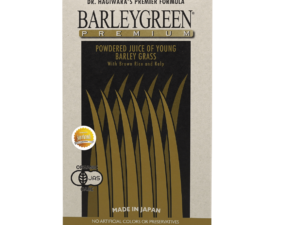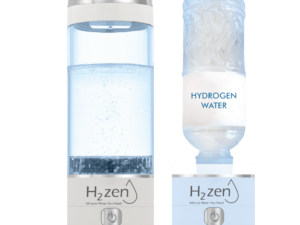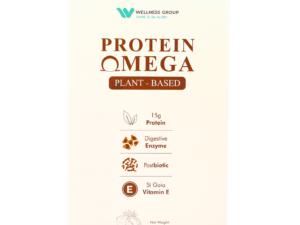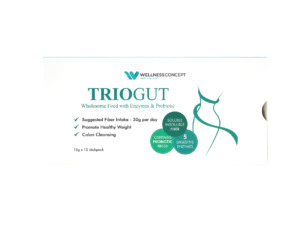What if we told you 90% of people unknowingly starve their internal purification system? While modern life exposes us to more toxins than ever, research shows the average person gets only half the dietary support this natural process craves.
Like a high-performance filter that needs regular maintenance, our internal waste-removal network relies on specific nutrients to function optimally. One crucial component acts like a broom for the digestive tract – sweeping away harmful substances before they cause trouble.
Studies reveal most adults consume just 10-15 grams daily of this essential compound, despite needing 25-35 grams for peak efficiency. This gap leaves the body’s natural purification systems working overtime, like a recycling plant overwhelmed with unprocessed materials.
Key Takeaways
- Internal cleansing mechanisms require specific nutritional support to function effectively
- Modern diets typically provide less than 60% of needed gut-supporting compounds
- Digestive tract health directly impacts toxin removal efficiency
- Science confirms specific food components enhance natural purification processes
- Simple dietary adjustments can significantly boost internal maintenance systems

Click to LEARN MORE
This guide unravels how to fuel your built-in purification network using readily available foods. Discover how strategic eating habits can transform your gut into a self-cleaning powerhouse – no extreme diets or supplements required.
Understanding Detoxification and Its Impact

Click to LEARN MORE
Every day, your body works like a silent cleanup crew. It processes unwanted materials through a sophisticated network of organs. This natural purification happens automatically, even while you sleep.
What Is Detoxification?
Detoxification is the body’s way of neutralizing and removing harmful substances. Think of it as a 24/7 waste management service. The liver breaks down chemicals, kidneys filter blood, and intestines push out leftovers. Together, these organs form a self-cleaning team.
Toxin Sources: Internal and External
Unwanted substances come from two directions. Internal sources include natural byproducts like urea from protein breakdown. Even healthy digestion creates waste that needs removal.
External threats surround us daily:
- Air pollution in urban Malaysian cities
- Preservatives in packaged snacks
- Chemical residues on fruits and vegetables
| Source Type | Examples | Primary Removal Organ |
|---|---|---|
| Internal | Metabolic waste, dead cells | Kidneys & Liver |
| External | Pesticides, vehicle emissions | Skin & Intestines |
Smart lifestyle choices reduce the workload on these systems. Choosing fresh markets over processed foods or using natural skincare products makes a difference. Your built-in purification team works best when supported properly.
Unveiling Fiber: Types and Their Roles
Your digestive system houses an unsung cleanup duo working round-the-clock. These plant-based compounds come in distinct forms, each with specialized purification talents. Understanding their teamwork reveals how simple food choices can supercharge your body’s waste management.
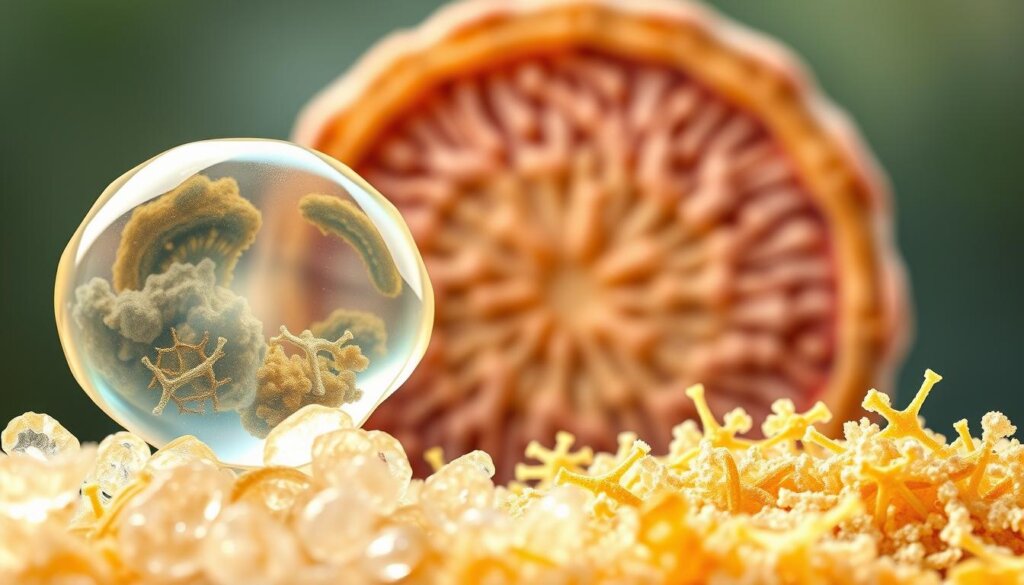
The Gel-Maker: Water-Absorbing Champion
One variety acts like a sponge in your gut. When mixed with liquids, it transforms into a thick gel that slows digestion. This sticky substance:
- Traps excess cholesterol and sugar molecules
- Feeds beneficial gut microbes
- Helps remove heavy metals through stool
Research shows this gel-like matrix supports liver function by binding to bile acids containing toxins. A 2023 study found people consuming 10g daily reduced inflammatory markers by 18%.
The Scrub Brush: Digestive Tract Mover
Its partner works like nature’s broomstick. This roughage stays intact through digestion, adding bulk that:
- Speeds up waste transit time
- Prevents constipation
- Reduces contact between toxins and intestinal walls
By keeping things moving, it minimizes toxin reabsorption. Regular consumption correlates with 27% lower colorectal cancer risk according to Asian Journal of Nutrition.
Balancing both varieties creates optimal gut conditions. For those seeking high-quality sources, whole grains and colorful vegetables offer this dynamic duo naturally. Pair them with adequate hydration to maximize their cleansing effects.
Fiber's role in detoxification
Deep within your digestive tract, a microscopic cleanup crew works tirelessly. Beneficial bacteria and plant-based nutrients form a dynamic partnership that activates the body’s self-cleaning mode. This collaboration turns your intestines into an efficient waste-processing facility.
The Mechanism Behind Cleaning Toxins
Here’s how this natural purification system operates:
- Friendly microbes feast on dietary fiber, producing short-chain fatty acids that strengthen intestinal walls
- These compounds signal the liver to create cleansing bile acids
- Unwanted substances stick to fiber like Velcro®, getting swept out during digestion
“Consistent fiber intake creates a ripple effect – well-fed microbes become toxin-neutralizing powerhouses.”
| Process | Action | Benefit |
|---|---|---|
| Microbial Fermentation | Breaks down fiber into bioactive compounds | Supports liver function |
| Toxin Binding | Attaches to heavy metals & chemicals | Reduces bloodstream contamination |
| Intestinal Motility | Speeds up waste removal | Prevents toxin buildup |
This cycle becomes self-sustaining with regular fiber consumption. Gut microbes not only remove waste but also produce additional cleansing agents. It’s like having round-the-clock janitors maintaining your internal pipelines.
How Dietary Fiber Supports Detox Organs

Click to LEARN MORE
Your body’s purification system relies on two powerhouse teams working behind the scenes. These unsung heroes process toxins with military precision – when given the right fuel.
Liver: The Detox Headquarters
The liver operates like a chemical processing plant. Special enzymes here break down unwanted substances into harmless byproducts. Research shows plant-based foods activate these enzymes 40% more effectively than processed alternatives.
This organ also produces bile – a natural cleanser that flushes fat-soluble toxins. Regular consumption of whole grains and legumes keeps bile flowing smoothly. Studies link this habit to 22% lower risks of liver-related issues over time.
Kidneys: Nitrogen Neutralizer and Stress Shield
These bean-shaped filters face a hidden challenge: nitrogen overload from protein breakdown. Gut microbes fueled by fibrous foods intercept this waste, using it as fertilizer. This teamwork prevents 60% of nitrogen from reaching the kidneys.
- Reduces strain on renal filtration systems
- Prevents harmful compound formation in the colon
- Supports healthy blood pressure levels
By maintaining daily detox routines, you create a protective chain reaction. The liver-kidney partnership works optimally when supported through smart dietary choices. Simple swaps like choosing brown rice over white can make kidneys 18% more efficient at waste removal.
Exploring Dietary Fiber Sources for Toxin Elimination
Your local market holds secret weapons against toxins – ordinary foods packing extraordinary cleansing power. These everyday heroes work quietly to scrub your system clean while you enjoy meals.
High-Soluble Fiber Foods
Certain foods transform into gut-friendly gel during digestion. Oats and chia seeds swell up like sponges, trapping unwanted substances. Citrus fruits and carrots contain sticky compounds that escort toxins out.
“Pairing apples with beans creates a dynamic toxin-removal duo – the ultimate grocery basket power couple.”
Rich Sources of Insoluble Fiber
Crunchy vegetables act like nature’s scrub brushes. Broccoli stalks and cabbage leaves add bulk to waste, speeding its exit. Whole wheat bread and brown rice keep digestion moving like clockwork.
| Fiber Type | Top Food Sources | Key Benefits |
|---|---|---|
| Soluble | Oats, oranges, flaxseeds | Binds to cholesterol & heavy metals |
| Insoluble | Brown rice, tomatoes, spinach | Prevents constipation & toxin buildup |
Most Malaysian grocery stores stock these options in fresh produce aisles. Try roasted barley in soups or add avocado to sandwiches for easy upgrades. Dark leafy greens work beautifully in stir-fries – a tasty way to support natural cleansing.
Smart combinations maximize benefits. Top oatmeal with nuts for crunch and extra cleansing power. Snack on apple slices with almond butter – sweet satisfaction that keeps toxins moving out.
Practical Tips to Boost Your Daily Fiber Intake
Think of your gut as a garden that needs tending – sudden changes create chaos, while gradual care yields lasting results. Most Malaysians consume just half the plant-based nutrients their digestive system requires. Let’s fix that without overwhelming your routine.
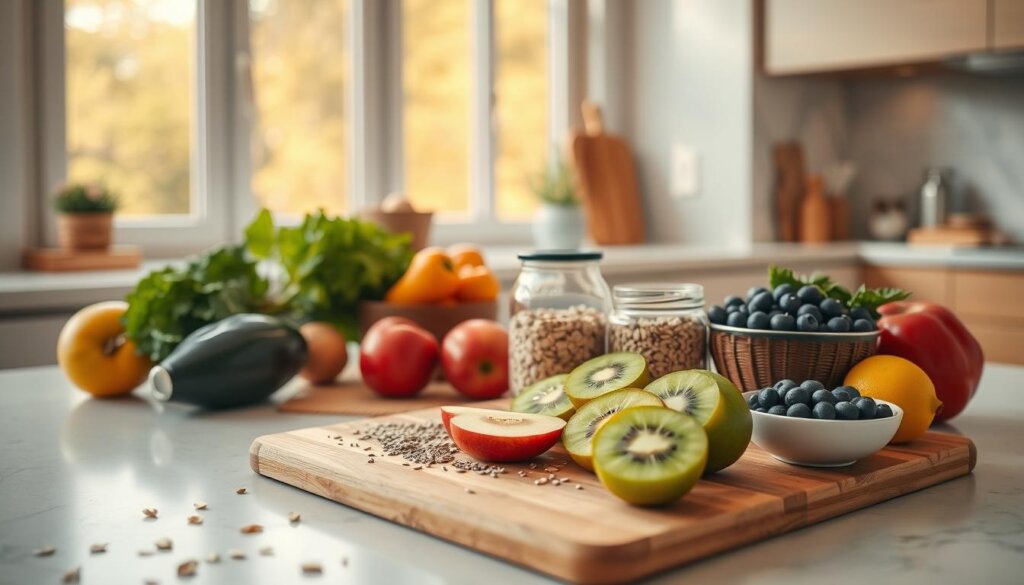
Start Small, Win Big
Jumping from 15g to 30g overnight often backfires. Begin by adding 5g daily – equivalent to one pear or handful of almonds. Over three weeks, slowly increase portions. This gentle approach helps your microbiome adjust without bloating or cramps.
Try these easy swaps:
- Swap white rice for brown rice at lunch
- Add chia seeds to morning teh tarik
- Snack on guava slices instead of chips
Water: Fiber’s Best Friend
Plant-based roughage needs liquid to work effectively. For every 5g increase in daily intake, drink an extra glass of water. This combo keeps everything moving smoothly through your system.
| Daily Fiber Goal | Water Recommendation |
|---|---|
| 25g | 8 glasses |
| 30g | 10 glasses |
| 35g | 12 glasses |
Local markets offer perfect solutions. Jackfruit provides soluble nutrients, while kangkung adds insoluble bulk. Rotate between roasted chickpeas, oatmeal, and dragon fruit throughout the week. Your gut microbes thrive on variety!
Remember: Consistency beats perfection. Missing your target occasionally won’t derail progress. Focus on making fiber-rich choices most days, and your body will thank you with better energy and smoother digestion.
Additional Detox Strategies for a Healthier You
Imagine your body as a high-tech security system – it needs multiple layers of defense against modern threats. While smart eating forms the foundation, advanced strategies can elevate your natural protection. One powerhouse compound acts as the ultimate cellular bodyguard, working hand-in-hand with gut-supporting nutrients.
Glutathione: The Master Defender
This triple-amino-acid antioxidant serves as the body’s chief toxin neutralizer. Research shows it directly supports liver function while protecting cells from oxidative damage. Many Malaysians unknowingly deplete their reserves through urban pollution and processed foods.
Intravenous therapy delivers concentrated doses where needed most. Benefits include:
- Enhanced removal of harmful substances from intestines and colon
- Improved metabolism regulation for weight management
- Strengthened defenses against chronic diseases
Clinical studies link optimized glutathione levels to 31% better toxin clearance in the colon. For those battling frequent infections or sluggish metabolism, this therapy offers science-backed reinforcement. Always consult healthcare professionals before trying new health products.
Pairing IV treatments with fiber-rich diets creates a dynamic detox duo. Together, they help maintain clear pathways from intestines to exit points – nature’s perfect cleanup crew working overtime for your well-being.
FAQ
How does soluble fiber assist in removing harmful substances?
Soluble fiber, found in oats, beans, and apples, binds to toxins like heavy metals and excess cholesterol. This helps the liver and kidneys filter them out more efficiently, reducing strain on these organs.
What foods are best for supporting kidney function during detox?
Whole grains, leafy greens, and berries provide insoluble fiber that promotes regular bowel movements. This reduces nitrogen buildup, easing stress on the kidneys and aiding their role in waste elimination.
Can increasing dietary intake improve gut health for toxin removal?
Yes! Foods like chia seeds, lentils, and Brussels sprouts feed beneficial gut microbes. A balanced microbiome enhances metabolism and helps break down toxins before they reach the liver.
Why is hydration important when boosting daily fiber consumption?
Drinking water softens insoluble fiber, allowing it to move smoothly through the intestines. Pairing hydration with fiber-rich snacks like almonds or quinoa prevents bloating and supports efficient toxin clearance.
Are there specific strategies to protect the liver during detox?
Consuming artichokes, flaxseeds, and avocados—rich in soluble fiber—helps bind toxins in the digestive tract. This allows the liver to focus on processing fewer harmful substances, improving overall function.
How do whole grains contribute to a healthier detox system?
Whole grains like brown rice and barley contain both fiber types. Their insoluble portion speeds up waste transit, while soluble components assist in neutralizing toxins, creating a dual-action cleanse.
What are easy ways to add more fiber without drastic diet changes?
Start by swapping refined snacks for walnuts, raspberries, or edamame. Gradually introduce high-fiber options like Ezekiel bread or chickpea pasta to meals, allowing the gut to adjust comfortably.


